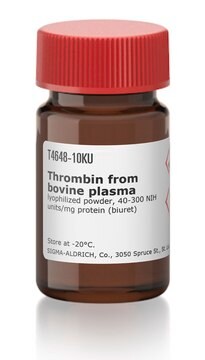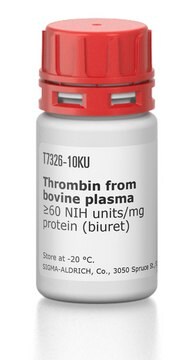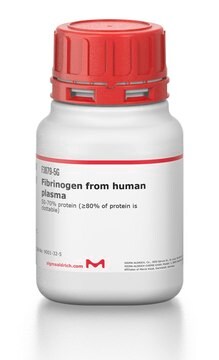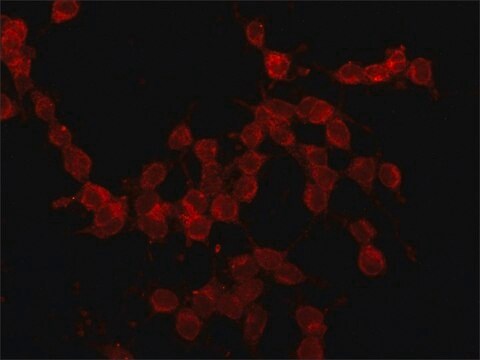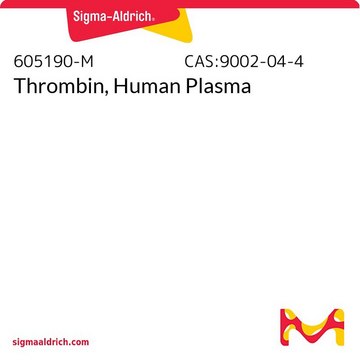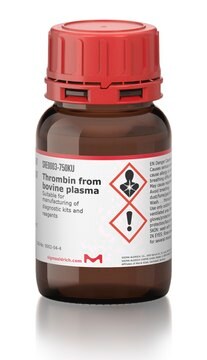T6884
Thrombin from human plasma
lyophilized powder, ≥2,000 NIH units/mg protein (E1%/280, 18.3)
Synonym(s):
Factor IIa
About This Item
Recommended Products
biological source
human plasma
Quality Level
form
lyophilized powder
specific activity
≥2,000 NIH units/mg protein (E1%/280, 18.3)
mol wt
37.4 kDa
impurities
HIV and HBsAg, source material tested negative
UniProt accession no.
storage temp.
−20°C
Gene Information
human ... F2(2147)
Looking for similar products? Visit Product Comparison Guide
General description
Application
- in the preparation of fibrin gels for assessing human bone marrow stromal cells (hBMSC) morphology,
- in the activation of platelets,
- to evaluate the integrity of endothelial cell (EC) monolayers
Biochem/physiol Actions
Unit Definition
Physical form
Analysis Note
Other Notes
Disclaimer
inhibitor
Signal Word
Danger
Hazard Statements
Precautionary Statements
Hazard Classifications
Eye Irrit. 2 - Resp. Sens. 1 - Skin Irrit. 2 - STOT SE 3
Target Organs
Respiratory system
Storage Class Code
13 - Non Combustible Solids
WGK
WGK 2
Flash Point(F)
Not applicable
Flash Point(C)
Not applicable
Regulatory Listings
Regulatory Listings are mainly provided for chemical products. Only limited information can be provided here for non-chemical products. No entry means none of the components are listed. It is the user’s obligation to ensure the safe and legal use of the product.
JAN Code
T6884-250UN-PW:
T6884-100UN-PW:
T6884-VAR:
T6884-BULK:
T6884-PH:
T6884-5KU:
T6884-1KU-PW:
T6884-5KU-PW:
T6884-1KU:
T6884-250UN:
T6884PROC:
T6884-100UN:
Certificates of Analysis (COA)
Search for Certificates of Analysis (COA) by entering the products Lot/Batch Number. Lot and Batch Numbers can be found on a product’s label following the words ‘Lot’ or ‘Batch’.
Already Own This Product?
Find documentation for the products that you have recently purchased in the Document Library.
Customers Also Viewed
Articles
Thrombin Factor IIa is an endolytic serine protease that selectively cleaves the Arg--Gly bonds of fibrinogen to form fibrin and release fibrinopeptides A and B.
Our team of scientists has experience in all areas of research including Life Science, Material Science, Chemical Synthesis, Chromatography, Analytical and many others.
Contact Technical Service